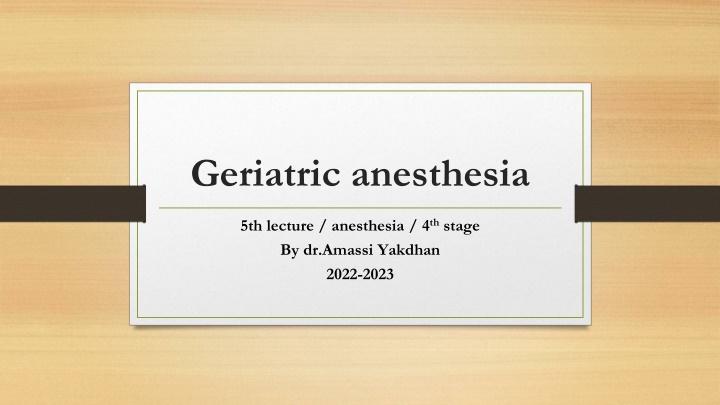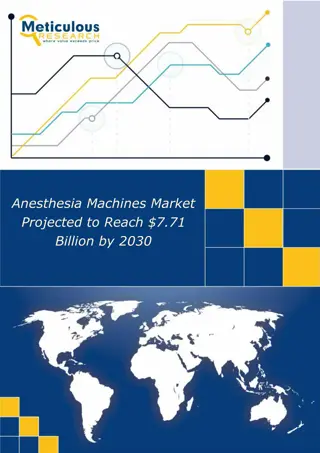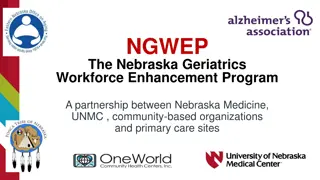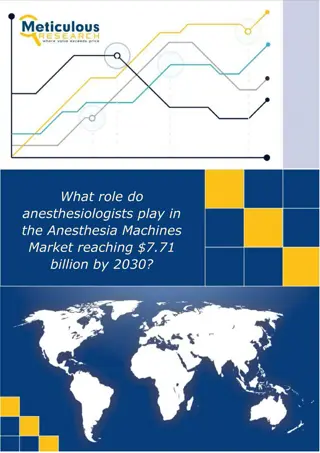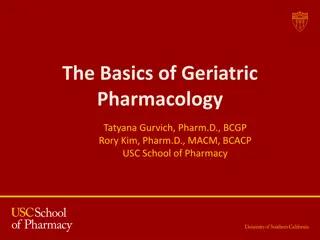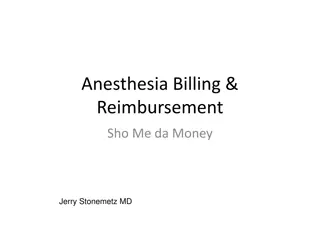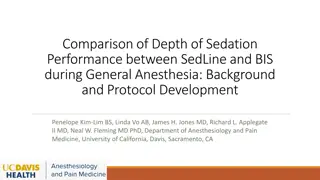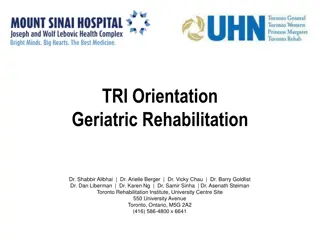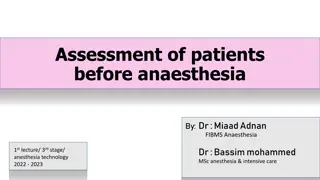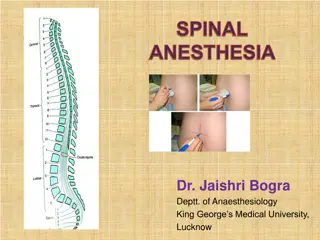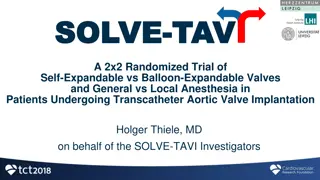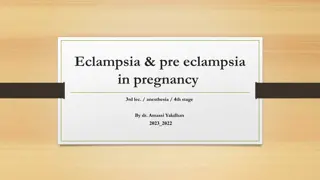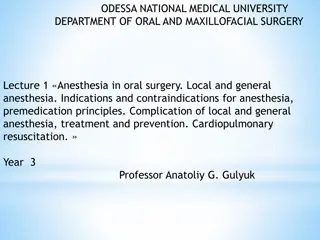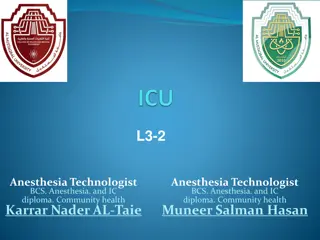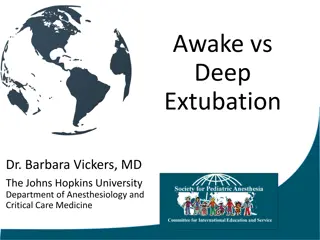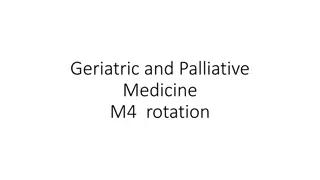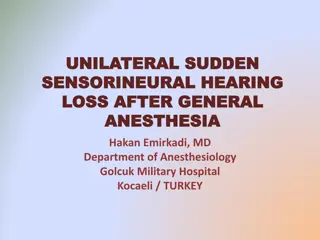Geriatric anesthesia
Explore the challenges in geriatric anesthesia, chest wall deformities, respiratory system anatomy, and physiology. Understand the impact on cardiovascular and central nervous systems, renal function, and musculoskeletal systems in the elderly. Gain insights into managing these complexities for safe anesthesia administration.
Download Presentation

Please find below an Image/Link to download the presentation.
The content on the website is provided AS IS for your information and personal use only. It may not be sold, licensed, or shared on other websites without obtaining consent from the author.If you encounter any issues during the download, it is possible that the publisher has removed the file from their server.
You are allowed to download the files provided on this website for personal or commercial use, subject to the condition that they are used lawfully. All files are the property of their respective owners.
The content on the website is provided AS IS for your information and personal use only. It may not be sold, licensed, or shared on other websites without obtaining consent from the author.
E N D
Presentation Transcript
Geriatric anesthesia 5th lecture / anesthesia / 4thstage By dr.Amassi Yakdhan 2022-2023
Respiratory system Anatomy Deformity of chest wall : scoliosis ,kyphosis . Respiratory muscle strength elastic recoil of lung Alveoli number collapse , elasticity Dighram muscle become weaker ,so less ability to exhaled & inhaled . rate of Obstructive lung disease : COPD , asthma , emphysema , chronic bronchitis , corpumonale , cancer types . chest wall compliance rigidity. number of secretory glands cough reflex Celia number & activity . , size , ability to
Respiratory system Physiology CC > FRC Exv end expiratory time I: E ratio V/Q mismatch lung & chest wall capacity TLC Hypoventilation Air trapping Pneumothorax Atelectasis CO2 retention maximum inspiratory & expiratory capacity Rv residual volume . FRC . atelectasis or air trapping
C.V.S & C.N.S Atherosclerosis , ischemic changes , hypertension & arrhythmia Autonomic system dysfunction impaired in responsiveness. mass & changes in BBB permeability thermoregulation center problems heat loss Difficult neuraxial anesthesia establishment . Delay recovery Orthostatic hypotension autonomic nervous system responsiveness changes in muscle hypertrophy to atropine response
Renal systems Renal system : number of glomeruli GFR renal function & clearance delay recovery Nutrition : Easy to get hypoglycemia for long time fasting Easy to dehydrated & fluid depletion Easy to over hydrated edema or failure . Electrolyte disterbance no need pulmonary
Musculoskeletal systems Pressure on tendon or muscle that cause tearing in or in rare cases reals of k from the muscle . Difficult neuraxial application spine deformity ,scoliosis or lordosis , joint stiffness make the positioning difficult . Degenerative problems 1.limitation of joints movements 2.difficult airway management difficult cannulation subcutaneous tissue & skin fragility Thin subcutaneous tissue tourniquet may cause on fat in #
C.N.S Changes in BBB permeability. Delaye in response to anesthesia & delaye recovery. Cognitive disorders deal with the patient. arm brain circulation : its the time that need for drug to travel from site of injection (usually the arm ) to site of effect (brain) Caution : 1. Its slow in geriatric 2. Drugs should given in very small & slow. mass. Noumber of neural cells. cerebral blood flow. difficult to
How to give anesthesia in geriatric Anesthetic technique : All types of anesthesia can be given Neuraxial is better ,but difficult on application. Pre operative assesement : a team work of diffirance spicilaties . Complete assesement of medical diseases & their control for all systems. Hydration status , electrolyte , suger readings & nutrition state. Complex hx , ex. ,invx , & relative explanation.
How to give anesthesia for geriatric Keep in mind : Difficult air way managment ( ventilation & intubation( Difficult get venous access Difficult neuraxial Difficult deal with the patient. Intra operative : Close monitering vital signs Input & out put Hydration. Coexicesiting disease. Pain managment Close monitering of BP.
How to give anesthesia in geriatric Intra & post operative complication : C.V.A Ischemia Respiratory embolism Body Systems failure. Post operative : HDU admittion O2 therapy Pain managment Vital signs Coexisiting disease
Keep in mind Complete medical team should work on geriatric Talent anesthetisit & technechian .Cognitive disorder is a problem Dehydration & electrolyte are aproblem Air way managment & face masking a problem Why All anesthetic , opioids & other drugs given in small & slow dosefo esuaceb? arm brain time is small due atherioseclrosis changes BBB pearmiabiltiy changes & autonomic disordesrs BMR & O2 consumption Hypothermia metabolisim in liver clearance in kidny
